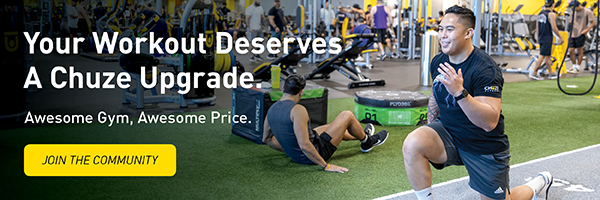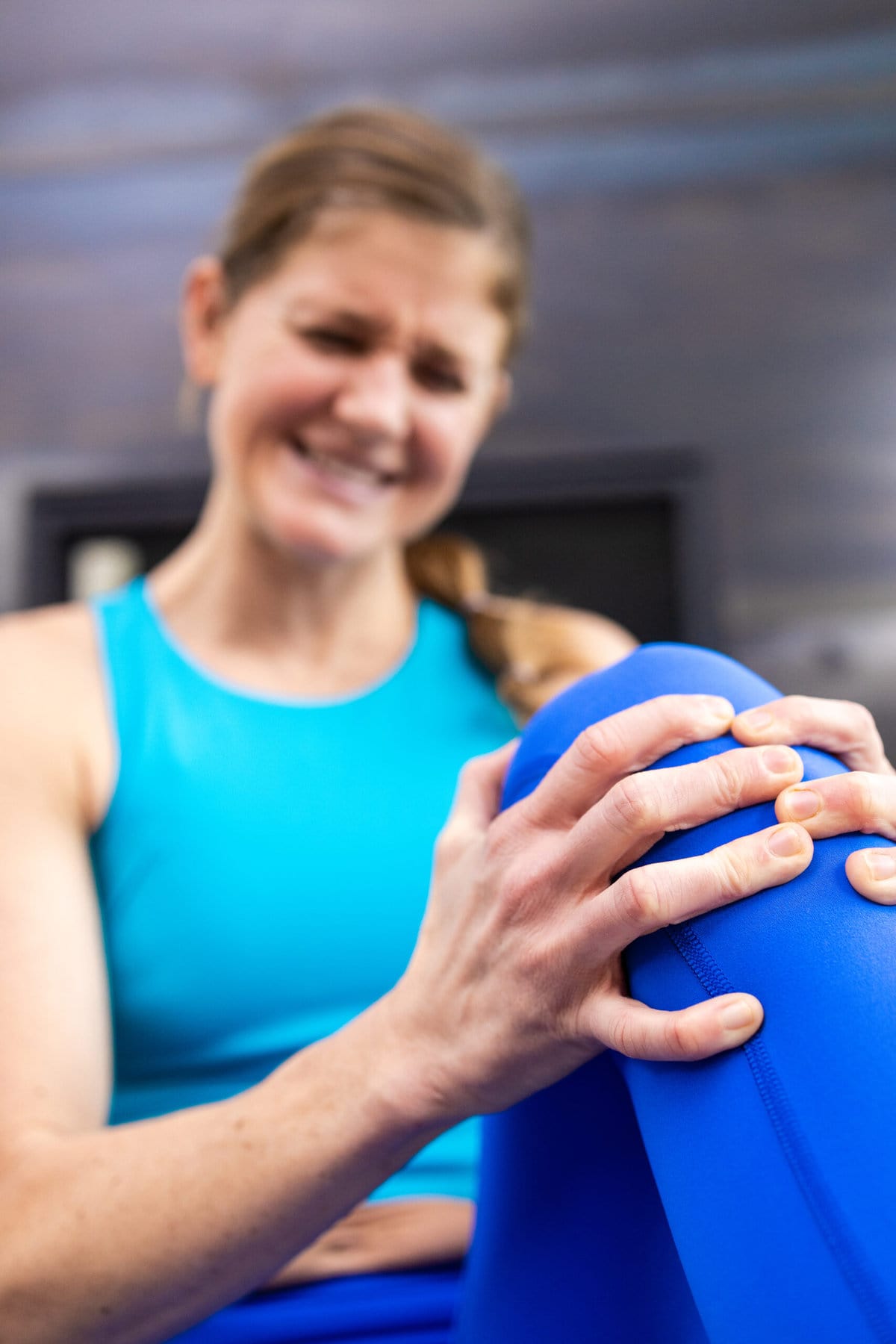There’s nothing quite like the feeling of a hard workout. The same could be said for the soreness that comes after. But even though that soreness is a good thing—a sign of muscle growth—it can be hard to stay sidelined.
Is it possible to speed up the recovery process and get back to training sooner?
The quick answer is yes! From hydration and nutrition to stretching and sleep, science-backed strategies can speed up your recovery, transforming after-workout sweats into newfound strength.
That said, since everyone’s fitness goals and training styles are unique, you’ll need to find an approach tailored to you. Read on to find out how you can do just that.
Why Post-Workout Recovery Matters
Proper recovery is more than a matter of muscle soreness; it’s a complex process impacting your overall fitness progress.
This is because rest and recovery are intrinsically tied to:
Muscle repair and growth – You create microscopic tears in your muscle fibers every time you exercise, particularly during strength training. Only during recovery can your body repair these tears, leading to stronger, more developed muscles.
Injury prevention – When your body is given time to heal and adapt between workouts, your muscles, tendons, and ligaments become more resilient. This helps decrease the likelihood of strains, sprains, and other overuse injuries.
Better performance – Effective recovery allows for a consistent training schedule. Taking time to recover well enables you to perform at a higher level in later workouts, leading to steadier progress in your fitness journey.
Whether elite athlete or weekend warrior, post-workout recovery is a must for everyone. So how can you maximize the potential (and minimize the duration) of this downtime?
Strategies to Enhance Recovery
Much like a high-performance machine, your body depends on several key processes to operate at peak efficiency and recover from intense use.
Let’s delve into five of these processes:
#1. Hydration: Keeping the Gears Oiled
Proper water intake is crucial for every bodily function, and recovery is no exception. Intense exercise depletes your body’s water and electrolyte stores through sweat, meaning you’ll need to replace those lost fluids for your muscles to fully recover.
Aim to drink water consistently throughout your exercise day, not just during and after a workout. For especially intense workouts spanning several hours, consider sports drinks to replenish electrolytes—just be mindful of sugar content in line with your fitness goals.
#2. Nutrition: Fueling Recovery
Just as the right fuel keeps a machine running smoothly, your body needs the right balance of nutrients to optimize recovery. Here’s a quick rundown of the best foods for pre- and post-workout recovery:
Carbohydrates are awesome for two reasons: they power you through the workout itself, and they replenish the glycogen in your muscles that get depleted during exercise. Simple and complex carbs like fruits, whole grains, and starchy vegetables before your workout can give you energy and help maximize calorie burn, while post-workout carbs support faster muscle recovery.
Protein is one of the biggest contributors to muscle growth, so opt for high-quality proteins like lean meats, fish, eggs, and plant-based options like beans, legumes, and tofu. Protein shakes and bars can also provide a quick and convenient boost after a hard workout, but research shows that results are the same whether you have protein before or after exercising.
Healthy fats such as those found in avocados, nuts, seeds, and olive oil work to reduce inflammation and replenish energy. Incorporating these healthy fats into your post-workout meals helps maintain a balanced diet and supports long-term recovery. A snack like almond butter on whole-grain toast or a smoothie with flaxseed is a great example of post-exercise nutrition that balances fats with protein and carbs.
These nutrients are the building blocks of both immediate recovery and long-term fitness. Fueling your body the right way is essential for getting the most out of your training.
#3. Rest and Sleep: Daily Maintenance
Just like any well-maintained machine needs downtime, your body relies on rest to repair and rebuild after intense activity. Sleep is where much of this magic happens, producing growth hormones that aid in:
Muscle repair and growth
Healing damaged tissues
Restoring your energy
Aim for a solid, consistent 7-9 hours of sleep every night. If you feel especially tired after a workout, a quick 20 to 30-minute nap could provide the recharge you need. Just be careful about napping too long, as this might disrupt your usual sleep schedule.
#4. Active Recovery: Maximizing Momentum
While machines require total downtime after heavy use, the human body uniquely thrives on active recovery—low-intensity activities that boost blood flow and help muscles optimize growth without overstressing them.
Some effective active recovery strategies include:
Light jogging, swimming, or cycling – These movements circulate blood through your muscles, deliver oxygen and nutrients, and promote recovery without the intensity of a full workout.
Incorporating yoga sessions or a gentle stretching routine – Doing so helps you improve flexibility, reduce muscle tension, and potentially lowers your risk of workout-related injuries in the future.
Keeping a regular schedule of active recovery – Yes, even on rest days! While experts recommend taking at least two days off per week from working out, striking the right balance between passive and active recovery during these rest days keeps your body primed for the next workout.
As counterintuitive as it might sound, incorporating these activities into your routine can lead to a quicker recovery after workout.
Of course, you always want to listen to your body and avoid overdoing yourself. So, don’t be afraid to take a day off if you feel like it’s too much.
#5. Tools and Tech for Post-Workout Tuneups
Tools like foam rollers and massage guns are fantastic ways to help release muscle tension and improve circulation.
These tools are particularly useful if you’re just starting a new routine or cranking up the intensity of an old one. Thanks to modern tech, muscle soreness can be managed quite well with:
Foam rollers for larger muscle groups (your quads, hamstrings, and back)
Massage guns for more targeted relief to knots or tense spots
Compression gear to prevent swelling and inflammation, especially in the legs
These are just a handful of the many options that promise to accelerate muscle recovery.
A word of caution, though: Before incorporating a lot of self-treatment strategies into your routine, it’s best to do additional research and consult with your physician. Each body—and each muscle in that body—is unique, so make sure chosen treatments align with your needs.
Creating Your Personalized Recovery Routine
Again, no two bodies are exactly the same. And the specifics of your recovery routine depend very much on your body, workout schedule, and fitness goals. So how can you find your ideal routine?
There are a few ways:
Listen to your body. Look out for signs of overtraining such as persistent fatigue, disrupted sleep, and irritability. These may indicate a need for more recovery time, a less intense workout schedule, or different recovery strategies. Recovery is not a one-size-fits-all solution, so tuning in to your body’s signals is critical.
Build off the basics. Before diving into advanced recovery techniques like ice baths or red light therapy, make sure you’ve built a solid foundation. This includes proper hydration, balanced nutrition (particularly protein and carbs for muscle repair), and quality sleep. Once you have these habits in place, it’s easier to adapt to new changes and observe the effect they have.
Evolve your routine. As your workout intensity or fitness goals change, so should your recovery routine. If you notice your current recovery methods aren’t as effective—maybe you’re still feeling sore or fatigued—try incorporating new tools like foam rolling, percussive therapy, or active recovery sessions to support your progress.
Find your ideal recovery time. Factors like age, stress, and current fitness level can greatly affect how long it takes to recover after a workout. If you’re new to exercise, give yourself plenty of recovery time, ideally two or three days per week. Doing so is much better than pushing through fatigue and risking injury.
It may take time and experimentation to discover the perfect recovery routine for your body.
Rather than going full throttle with your recovery efforts, aim for something that you can maintain long-term. So, adjust and experiment as needed. With a little time and dedication, you’ll be on your way to recovering faster, smarter, and at a pace that’s perfect for you.
Make Recovery Part of Your Fitness Routine at Chuze
It’s not just what you do in the gym that builds strength; how you recover matters just as much. But recovery doesn’t have to mean sitting out from your next session.
Balancing essentials like hydration, nutrition, and sleep along with more targeted strategies can help you speed up the healing process, getting you back to the gym faster.
And with a gym like one of our Chuze Fitness centers, who wouldn’t want to come back faster?
Chuze supports both your workout and your recovery with our fully outfitted facilities. Unwind sore muscles with a soothing HydroMassage, chill in a CryoLounge chair, or relax under red light therapy while sipping on a Chuze Blend post-workout smoothie.
Try a free 7-day membership trial to see for yourself.
Sources:
Houston Methodist. Exercise Recovery: Why It’s Important & 3 Tips for Doing it Right.
Healthline. Should You Drink Sports Drinks Instead of Water? https://www.healthline.com/nutrition/sports-drinks
Healthline. Should You Have a Protein Shake Before or After Your Workout?
Healthline. Is It Normal to Take a Nap After a Workout?
Houston Methodist. Exercise Recovery: Why It’s Important & 3 Tips for Doing It Right.
UPMC. Benefits of Compression Gear.
Everyday Health. Post-Workout Muscle Recovery: How to Let Your Muscles Heal and Why.
 Reviewed By:
Reviewed By:
Ani is the Vice President of Fitness at Chuze Fitness and oversees the group fitness and team training departments. She’s had a 25+ year career in club management, personal training, group exercise and instructor training. Ani lives with her husband and son in San Diego, CA and loves hot yoga, snowboarding and all things wellness.







